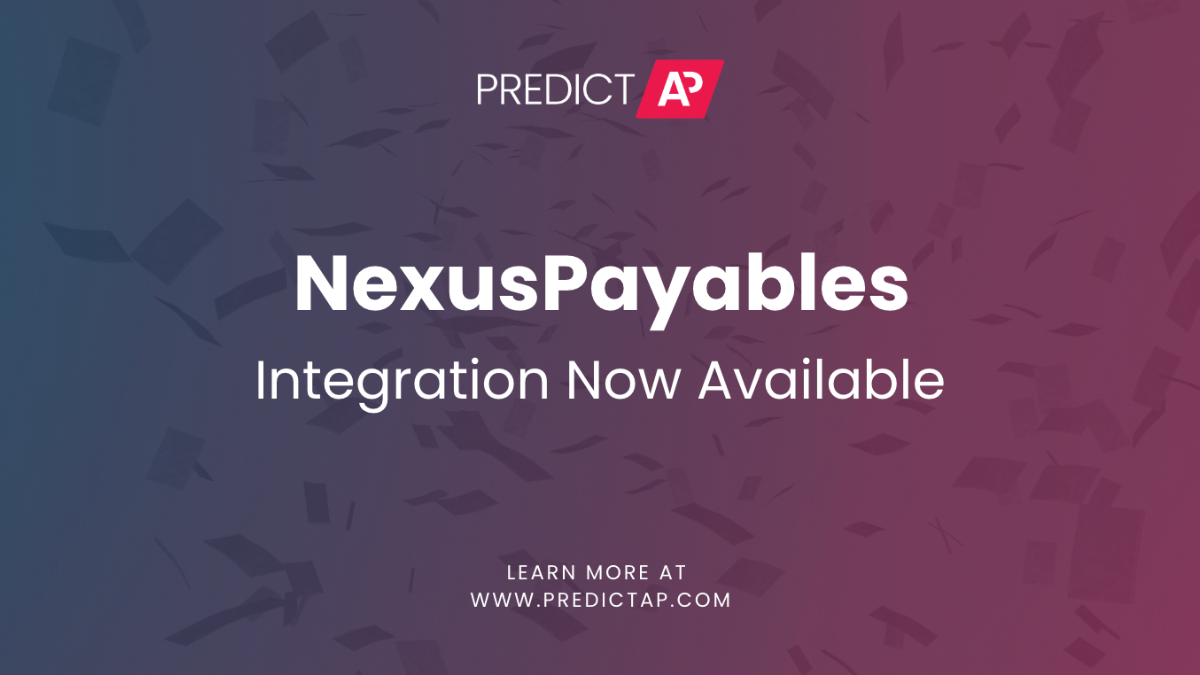AI vs. OCR: Choosing the Best Invoice Capture Solution for Your Business
Efficient invoice capture is essential for managing the large volume of transactions involved in property management, development, and other related activities.
Invoice capture involves the process of extracting, digitizing, and processing data from invoices to integrate it into accounting and financial systems. There are various approaches to invoice capture, ranging from basic manual entry to advanced automated solutions, each offering different levels of efficiency and accuracy.
Manual Invoice Data Entry
Traditionally, invoice capture has been a manual process, where accounts payable (AP) staff manually enter invoice data into the system. This approach, while straightforward, is time-consuming and prone to human error.
The manual process often involves physically handling invoices, entering data such as vendor information, amounts, and dates, and then coding these invoices to the correct accounts or properties within the company’s accounting system.
In the most extreme scenarios, the manual approach will go as far as printing, stamping, and using FedEx or a courier to run physical invoices and checks between different offices, adding even more time, cost, and touches per every single invoice.
Given the complexity and high volume of invoices in the real estate industry, this method is increasingly seen as inefficient. It also allows for human error and creates too many openings for fraudulent activity.
When invoice processing is happening across dozens or hundreds of properties, and passing through many hands, errors and delays can add up to overpayments, missed payment deadlines, and strained vendor relationships—all bad for the bottom line.
Technology-Enabled Invoice Capture
Advancements in technology have introduced more efficient solutions. Optical Character Recognition (OCR) systems automate data extraction from invoices, reducing the burden of manual entry but still requiring some manual oversight for accuracy.
More advanced approaches now incorporate machine learning (ML) and artificial intelligence (AI) to not only capture but also automatically code invoices to the appropriate accounts, properties, or budget lines. These AI-driven systems improve over time, offering greater accuracy and efficiency.
The most comprehensive solutions integrate AP automation directly with property management software, streamlining the entire process from invoice receipt to payment.
This level of automation is transforming the way real estate companies manage their accounts payable, enabling faster processing, fewer errors, and significant cost savings.
This overview sets the stage for a more detailed exploration of the leading tech-enabled approaches to invoice capture in real estate.
Supporting content
What is OCR?
Optical Character Recognition (OCR) converts different types of documents, such as scanned paper documents, PDFs, or images captured by a digital camera, into editable and searchable data.
OCR was first developed in the early 20th century and has since evolved into a highly sophisticated tool used across various industries.
In the context of invoice processing, OCR works by scanning a document, recognizing the text characters within it, and converting them into machine-readable data that can be entered into accounting or management systems.
Advantages of OCR for Invoice Data Entry
OCR offers significant advantages over manual data entry, primarily in speed and efficiency.
By automating the extraction of data from invoices, OCR reduces the time required to process large volumes of documents.
This technology is also widely used and well-understood, making it a reliable choice for businesses looking to streamline their accounts payable processes without significant investment in new technology.
Limitations of OCR
Despite its benefits, OCR has limitations. Its accuracy can be challenged by complex document layouts, poor-quality scans, or handwritten notes, leading to potential errors that still require human oversight.
Additionally, OCR lacks the contextual understanding of invoice data that more advanced technologies, such as machine learning, can offer.
It can capture the text but cannot interpret the nuances or intent behind the data, which limits its effectiveness in more complex accounting tasks.
Specific to real estate accounting, OCR is not capable of applying the tacit knowledge of each property's vendors, accounts, codes, and allocations, all of which is required for fully coding invoices for payment.
Even with the help of some templates and basic decision trees, OCR will always be limited to what is known by looking at the invoice.
Experienced real estate AP professionals know there's much more to getting each invoice paid correctly.
Supporting content
What is AI-Enabled Invoice Capture?
AI-enabled invoice capture refers to the use of artificial intelligence, specifically machine learning (ML) and natural language processing (NLP), to automate and enhance the process of extracting data from invoices.
Unlike traditional methods, which rely solely on Optical Character Recognition (OCR) to digitize text, AI-driven solutions can understand and interpret the content of invoices more contextually. Machine learning algorithms are trained on large datasets of invoices, enabling the system to recognize patterns, learn from past data, and improve over time.
NLP further enhances this process by allowing the system to grasp the meaning and intent behind different data fields, making it more effective at processing complex or varied invoice formats.
Advantages of AI-Enabled Solutions
AI-enabled invoice capture offers several key advantages over traditional methods. First and foremost, it significantly improves the accuracy and reliability of data capture.
By learning from historical data and recognizing patterns, AI systems can reduce errors that commonly occur with OCR, especially in complex or low-quality documents.
Moreover, AI brings a contextual understanding to the table, enabling the system to correctly interpret and categorize data fields even when the invoice format varies significantly.
This adaptability allows AI-driven solutions to scale effectively across different vendors and document types, making them ideal for large organizations with diverse invoicing needs.
AI-enabled invoice capture not only streamlines the accounts payable process but also provides a more robust and flexible solution for managing financial data.
Most significant is the ability to infer and codify the experiential knowledge based on existing AP data in order to fully code each invoice. AI invoice capture solutions can learn to code invoices much in the way a new AP hire can—but significantly faster. And they can capture and code batches of invoices simultaneously—something neither a human nor OCR can do.
The majority of the difficulty in real estate AP is learning and applying the experiential institutional knowledge, not the act of data entry itself.
This is why outsourcing AP data entry has been an inadequate stop-gap solution for most real estate firms, and where OCR will continue to fall short: the data that requires the most time to learn and enter is never on the printed invoice. It's in your accounting system, and your AP staff memory.
When deciding which solution best suits your invoice capture needs, AI and OCR make a true apples-to-apples comparison challenging.
Accuracy and Reliability
OCR technology, while effective in digitizing text, often struggles with accuracy, particularly when faced with complex layouts, poor-quality scans, or handwritten content.
Common errors include misreading characters, incorrect data extraction, and failing to capture essential details. While many OCR solutions will tout high accuracy as their primary success metric, they are still constrained by the quality and clarity of each scanned invoice, as well as the availability of templates to assist in interpreting the data.
These issues can lead to inaccuracies that require manual correction, undermining the efficiency gains of automation.
In contrast, AI-enabled invoice capture significantly enhances accuracy by leveraging machine learning algorithms that learn from historical data and improve over time.
This contextual awareness allows AI systems to understand the nuances of invoice data, reducing errors and increasing reliability, even in complex or varied documents.
Scalability and Adaptability
OCR solutions have limitations when it comes to handling diverse invoice formats. They often require manual configuration or template creation to adapt to new layouts, making scalability a challenge. This reliance on templates can slow down the processing of invoices from new vendors or those with unconventional formats.
AI-enabled solutions, on the other hand, are highly scalable and adaptable. They can automatically adjust to different formats and vendors without the need for manual intervention.
This can lead to confusion at times, where OCR appears to successfully read what's on the invoice while AI seems to miss something "obvious."
The difference is that AI is looking beyond the printed invoice and comparing incoming data against its training data set, which is exactly what enables it to "see" what would be invisible to OCR.
Again, this is the key differentiator that allows AI solutions to code invoices based on historical data, a step beyond merely capturing and extracting invoice information.
This flexibility makes AI an ideal choice for large organizations dealing with a wide range of invoice types, enabling seamless processing regardless of format diversity.
Integration with Existing Systems
OCR-based systems can face integration challenges when connected with enterprise resource planning (ERP) or accounting systems.
Often, additional manual processes are required to ensure data flows correctly between systems, limiting the overall efficiency of the AP workflow.
AI-driven solutions will present a different set of challenges.
They can automatically map invoice data into ERP or accounting software, enabling fully automated workflows, when fully integrated into your system of record.
However, some industry-agnostic AI solutions or those that are part of a larger procure-to-pay suite will only work with a pre-determined solution set.
To select the best solution for your team's needs, decide whether you'd prefer to overhaul your end-to-end AP workflows, or address data entry only.
If you prefer to retain existing approval workflows and your system of record, seek out an AI invoice capture solution that will integrate with your existing systems without disrupting your preferred workflows.
Security and Compliance
OCR technology typically offers basic security features, but it may struggle with compliance requirements, particularly in industries with stringent data protection regulations. This is largely because OCR is not concerned with processing data in actionable ways, but lifting and passing it through to another system for the real work.
The lack of advanced security measures can expose organizations to risks, especially when handling sensitive financial information.
AI-enabled invoice capture systems, by contrast, often come equipped with advanced security protocols, including encryption and access controls.
These systems are also better equipped to meet regulatory compliance standards, ensuring that data is handled securely and in accordance with relevant laws.
Cost Efficiency
While OCR systems may have a lower initial cost, hidden expenses can arise due to inaccuracies and the need for manual corrections.
These additional costs can offset the initial savings, particularly in large-scale operations. AI-enabled solutions, though potentially more expensive upfront, offer significant long-term cost savings.
By reducing errors, minimizing manual intervention, and streamlining workflows, AI systems lower operational costs and enhance overall efficiency, providing a better return on investment over time.
If you're heavily invested in an accounting system and only want to solve challenges around AP data entry, either solution path will require some level of integration in order to implement.
Solutions that have API integrations with your current ERP will offer the fastest path to value and lowest total cost of ownership.
While OCR technology has been a useful tool in digitizing and automating parts of the invoice capture process, it falls short in meeting the demands of complex, high-volume industries like real estate.
The primary limitation of OCR lies in its lack of flexibility and inability to learn from new data.
OCR systems are rigid; they require specific formatting to function accurately, and any deviation—such as varied invoice layouts, poor-quality scans, or handwritten notes—can lead to errors.
These inaccuracies necessitate manual intervention, undermining the efficiency gains that automation promises.
In contrast, AI-enabled invoice capture solutions offer significant advantages, particularly for real estate accounts payable (AP) departments, where complexity is the norm.
AI-driven systems can understand and process a wide range of invoice formats without requiring manual adjustments. They leverage machine learning algorithms to continually improve their accuracy, adapting to new data and evolving with the business.
This capacity to learn and adapt is crucial in the real estate industry, where each property, vendor, and transaction may introduce new variables.
AI invoice capture solutions are superior to OCR over the long term in every way, making the only real question whether a generic AI invoice capture solution will be adequate, or a real-estate specific AI invoice capture solution would be best suited to your AP process and tech stack.
Choosing the Right Solution for Your Business
Assessing Business Needs
When evaluating invoice capture solutions, real estate accounting teams should start by thoroughly assessing their specific business needs. Key factors to consider include the volume of invoices processed monthly, the variety of invoice formats received from different vendors, and the complexity of coding invoices to specific properties or budget lines.
Identifying pain points such as high error rates, slow processing times, or significant manual labor required for data entry can help determine the level of automation needed.
For instance, if your team frequently deals with a high volume of invoices from diverse sources, an AI-enabled solution might be more suitable due to its adaptability and ability to handle varied formats without manual intervention.
Cost-Benefit Analysis
Conducting a cost-benefit analysis is crucial when choosing between traditional OCR and AI-enabled solutions.
While OCR might present a lower initial investment, it’s important to weigh this against the long-term benefits of AI.
AI solutions typically offer higher accuracy, reducing the need for costly manual corrections and reprocessing. Additionally, AI’s ability to scale and adapt to new vendors and formats can lead to substantial savings in operational costs over time.
Launching an OCR solution for invoice capture will require substantial time and effort to develop a robust set of templates for all recurring invoice types and layouts to yield the level of accuracy that would justify the effort. These templates will have to be maintained, revised, and added to as new vendors, properties, and policies are added to your AP systems and process.
When considering return on investment (ROI), it’s also vital to account for potential reductions in processing time, improved accuracy, and enhanced productivity, all of which can positively impact the bottom line.
Implementation and Integration Tips
Implementing AI-enabled invoice capture requires careful planning to ensure a smooth transition. Best practices include starting with a pilot program to test the solution in a controlled environment before full-scale deployment.
This allows the team to address any issues early and customize the solution to fit specific business needs. It’s also important to ensure that the chosen solution integrates seamlessly with existing ERP and accounting systems.
Close collaboration between IT and finance teams during the integration phase can help avoid disruptions and ensure that the new system enhances, rather than complicates, existing workflows.
Finally, providing adequate training to staff on the new technology will be essential for maximizing its potential and achieving the desired efficiency gains.
AI: The Future-Proof Path for Accounts Payable and Beyond
As the real estate industry continues to evolve, the demands on accounts payable (AP) departments are growing more complex. AI-enabled solutions offer a future-proof path forward, providing the adaptability, accuracy, and efficiency needed to meet these challenges.
Unlike traditional OCR systems, which are limited by their inability to learn and adapt, AI systems continuously improve, making them better suited to handle the diverse and ever-changing landscape of real estate transactions.
Beyond AP, AI-driven automation has the potential to revolutionize other areas of real estate business as well. From predictive analytics in property management to intelligent customer relationship management (CRM) systems, AI can streamline operations, enhance decision-making, and improve customer satisfaction.
By embracing AI, real estate businesses can not only optimize their current processes but also position themselves to capitalize on future opportunities, staying ahead in a competitive market.
AI offers a robust, scalable, and flexible solution that goes beyond mere efficiency gains. It empowers real estate businesses to handle the complexities of AP and other operational areas with greater ease, accuracy, and confidence.
As the industry continues to innovate, adopting AI is not just a strategic move—it’s a necessary step toward securing long-term success and resilience in a rapidly changing business environment.
Contributors:
.png?width=400&height=400&name=dave%20(1).png)
David Stifter
Founder & CEO, PredictAP

Ali Noel
Director of Customer Success

Dana Grundy
Demand Generation Manager
From Our Blog
Learn more about invoice capture best practices and solutions.

Take Back Your AP Inbox: Why You Should Maintain Control Even When Outsourcing

Need a winning AI use case? Start with AP
